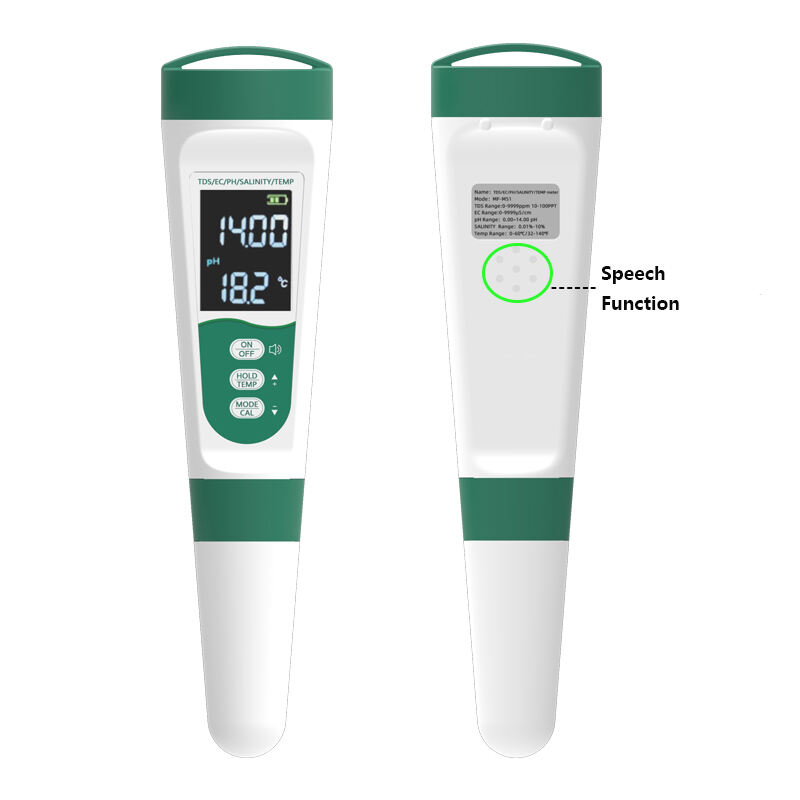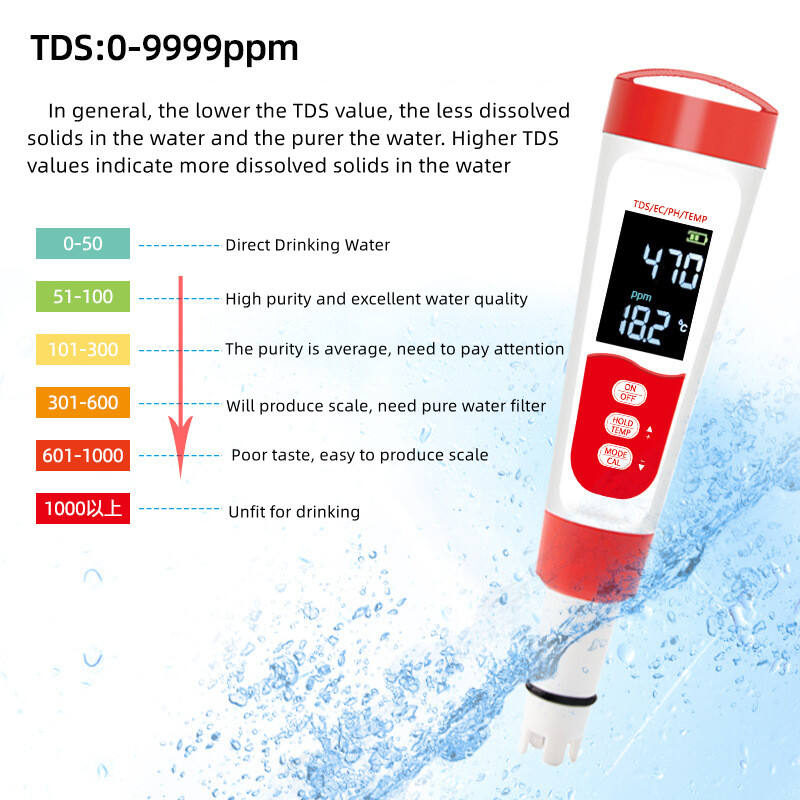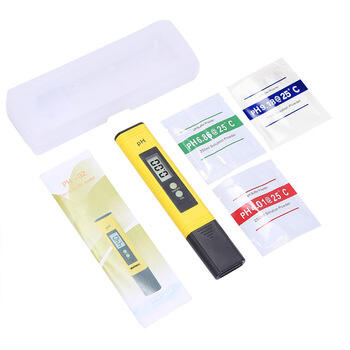ডিজিটাল পিএইচ মিটার জল
ডিজিটাল পিএইচ মিটার একটি উন্নত ইলেকট্রনিক যন্ত্র যা বিভিন্ন জলীয় দ্রবণের অম্লতা বা ক্ষারতা স্তর সঠিকভাবে মাপতে ডিজাইন করা হয়েছে। এই নির্ভুল যন্ত্রটি সোফিস্টিকেটেড সেন্সর প্রযুক্তি এবং ডিজিটাল প্রদর্শন ক্ষমতা একত্রিত করে তাৎক্ষণিক, নির্ভরযোগ্য পিএইচ পাঠ প্রদান করে। যন্ত্রটি সাধারণত একটি সংবেদনশীল ইলেকট্রোড প্রোব ফিচার করে যা তরলে ডুবিয়ে হাইড্রোজেন আয়ন ঘনত্ব মাপে এবং তা একটি LCD স্ক্রিনে ডিজিটাল পাঠ হিসেবে রূপান্তর করে। আধুনিক ডিজিটাল পিএইচ মিটারগুলি সাধারণত স্বয়ংক্রিয় তাপমাত্রা সংশোধন ফিচার সহ থাকে, যা বিভিন্ন তাপমাত্রা শর্তে নির্ভুল পাঠ গ্রহণ নিশ্চিত করে। এই মিটারগুলি সাধারণত 0-14 পিএইচ পরিমাপ পরিসর প্রদান করে এবং নির্ভুলতা সাধারণত ±0.01 পিএইচ এককের মধ্যে থাকে। অনেক মডেলে অতিরিক্ত ফিচার রয়েছে যেমন ডেটা লগিং ক্ষমতা, ক্যালিব্রেশন মেমোরি এবং জলপ্রতিরোধী কেসিং যা বেশি স্থিতিশীলতা জন্মায়। যন্ত্রটির ব্যবহারকারী-বান্ধব ইন্টারফেস সহজ পরিচালনা অনুমতি দেয়, যখন এর পোর্টেবল ডিজাইন এটি ল্যাবরেটরি এবং ক্ষেত্র প্রয়োগের জন্য উপযুক্ত করে। এই যন্ত্রগুলি বিভিন্ন খন্ডে অপরিহার্য যন্ত্রপাতি, যার মধ্যে রয়েছে জল গুণবত্তা নিরীক্ষণ, জলজ প্রাণী পালন, হাইড্রোপনিক্স, সুইমিং পুল রক্ষণাবেক্ষণ এবং শিল্প প্রক্রিয়া যেখানে নির্ভুল পিএইচ নিয়ন্ত্রণ গুরুত্বপূর্ণ।


